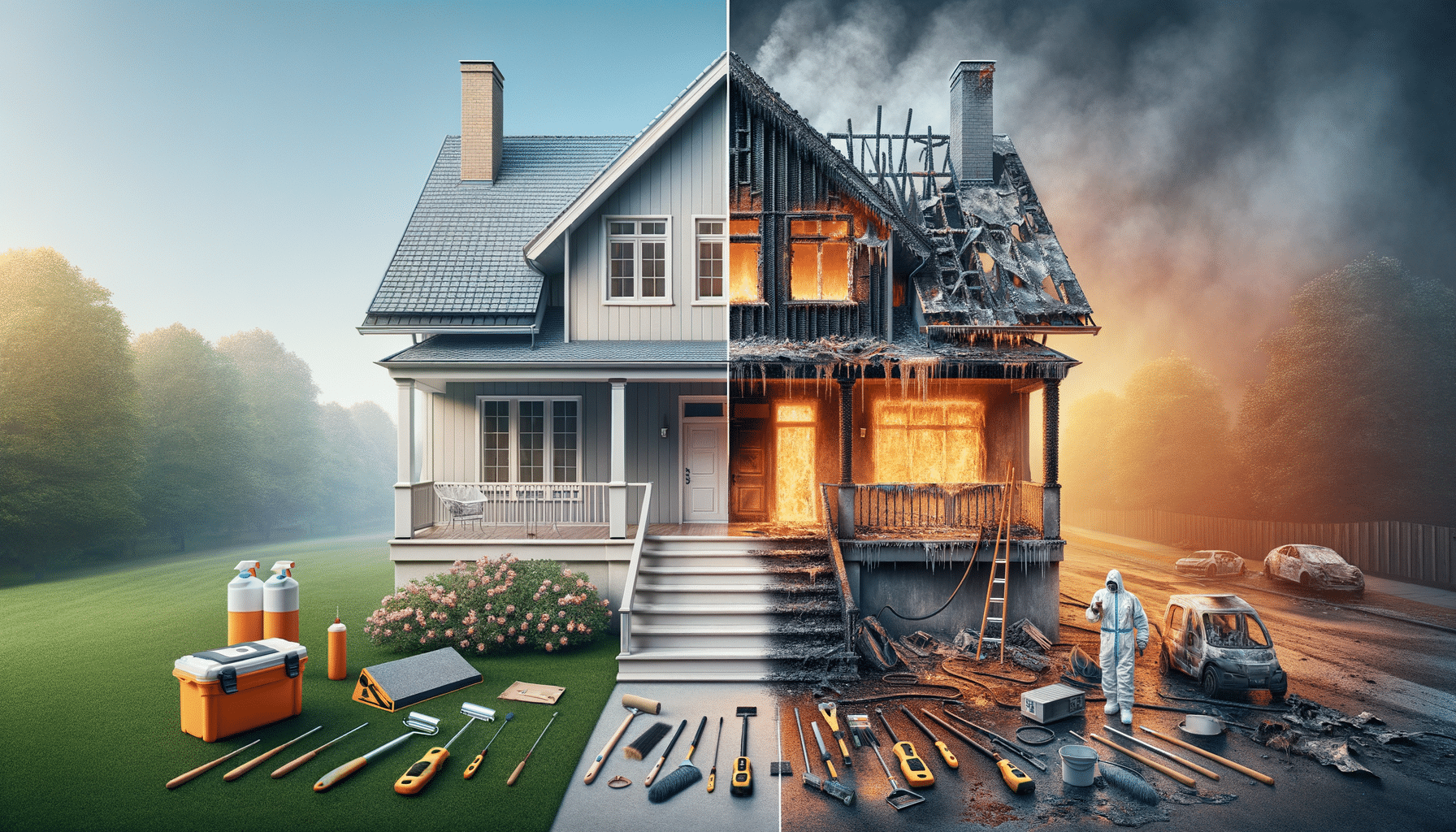
Understanding Fire Damage and Restoration Services
Introduction to Fire Damage
Fire damage is a devastating event that can leave a lasting impact on both the structure of a building and the lives of those affected. Understanding the nature of fire damage and the subsequent restoration process is crucial for anyone who may face such a situation. Fires can occur due to various reasons, including electrical faults, unattended cooking, or natural disasters like wildfires. The aftermath of a fire is not only about the visible destruction but also involves dealing with smoke damage, soot, and potential water damage from firefighting efforts.
The importance of addressing fire damage promptly cannot be overstated. Delayed action can exacerbate structural issues, lead to mold growth, and increase the cost and complexity of repairs. This article aims to provide a comprehensive overview of fire damage, the restoration process, and the services available to help homeowners and businesses recover efficiently.
The Immediate Aftermath of a Fire
In the immediate aftermath of a fire, the primary concern is ensuring the safety of all individuals involved. Once safety is secured, assessing the extent of the damage becomes the next priority. This assessment includes evaluating structural damage, identifying areas affected by smoke and soot, and checking for water damage resulting from firefighting efforts.
Fire damage can compromise the structural integrity of a building, making it unsafe for occupancy until repairs are made. Professionals often conduct a thorough inspection to determine which parts of the building are salvageable and which require demolition or extensive repairs. Additionally, the presence of smoke and soot can have adverse health effects, necessitating proper cleaning and ventilation to restore air quality.
During this phase, it is also essential to document the damage for insurance purposes. Taking photographs and maintaining a detailed inventory of damaged items can facilitate the claims process and ensure adequate compensation for losses incurred.
Understanding Fire Restoration Services
Fire restoration services play a vital role in helping individuals and businesses recover from fire damage. These services encompass a range of activities designed to restore the property to its pre-fire condition. The process typically begins with an initial assessment to determine the scope of work required, followed by the development of a detailed restoration plan.
Key components of fire restoration include:
- Debris Removal: Clearing out charred materials and debris to prepare the site for restoration work.
- Structural Repairs: Addressing any structural damage to ensure the building’s safety and stability.
- Smoke and Soot Cleanup: Using specialized equipment and techniques to remove smoke residues and soot from surfaces.
- Water Damage Mitigation: Drying out affected areas to prevent mold growth and further deterioration.
- Odor Removal: Employing deodorization methods to eliminate lingering smoke odors.
Fire restoration professionals are trained to handle these tasks efficiently, ensuring that the property is restored safely and effectively. Their expertise and access to specialized equipment make them invaluable in the recovery process.
Choosing a Fire Restoration Company
Selecting the right fire restoration company is crucial to ensuring a smooth and successful recovery process. When evaluating potential service providers, consider the following factors:
- Experience and Expertise: Look for companies with a proven track record in fire restoration and a team of certified professionals.
- Comprehensive Services: Ensure the company offers a full range of services, from initial assessment to complete restoration.
- Emergency Response: Timely intervention is critical, so choose a company that provides 24/7 emergency services.
- Insurance Coordination: A good restoration company will assist with the insurance claims process, helping you navigate paperwork and negotiations.
- Customer Reviews: Check online reviews and testimonials to gauge customer satisfaction and reliability.
Taking the time to research and select a reputable fire restoration company can make a significant difference in the outcome of the restoration process, ensuring that your property is returned to a safe and livable condition.
Preventive Measures and Safety Tips
While fire restoration services are essential in the aftermath of a fire, prevention remains the best strategy. Implementing safety measures can significantly reduce the risk of fire incidents. Here are some preventive tips:
- Install Smoke Detectors: Ensure that smoke detectors are installed on every level of your home and test them regularly.
- Practice Safe Cooking: Never leave cooking unattended, and keep flammable items away from stovetops.
- Electrical Safety: Regularly inspect electrical cords and outlets for damage, and avoid overloading circuits.
- Fire Extinguishers: Keep fire extinguishers accessible and ensure that household members know how to use them.
- Emergency Plan: Develop and practice a fire evacuation plan with your family or employees.
By taking these precautions, you can enhance the safety of your home or business and minimize the risk of fire damage. Awareness and preparedness are key components of fire safety, making it easier to respond effectively should an incident occur.


